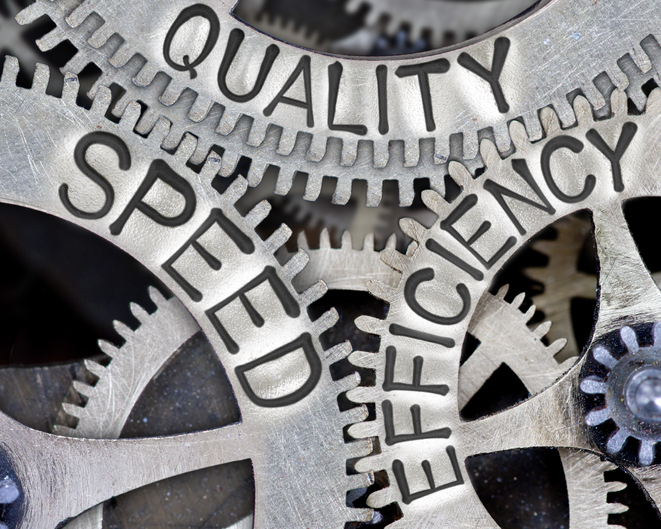Lab data analysis is the process of examining data that has been generated in a laboratory environment. The goal of this process is to generate valuable insights from these datasets which can subsequently be used to guide decision-making. From increasing operational efficiency to supporting quality assurance activities, lab data analysis has the potential to improve an organization.
This article provides a comprehensive insight into how laboratory data analysis can improve a business. We’ll run through what lab data analysis is and outline how it can be used to improve an organization.
What is laboratory data analysis?
Laboratory data analysis is the process of examining and interpreting data that has been generated in a laboratory setting, this can include data generated from instruments, workflow, experiments or clinical trials.
The primary goal of lab data analysis is to extract valuable information and insights from data. With this information, researchers can make informed decisions, assess the quality of experiments, generate reports, improve processes, and enhance the efficiency of laboratory operations.
8 ways laboratory data analysis can improve your business
Enhance the decision-making process
In the context of decision-making, laboratory data analysis can act as a powerful tool that assists businesses to make more informed and effective decisions.
Lab data analysis can uncover subtle trends and patterns within data. This deeper understanding allows decision-makers to gain a more comprehensive understanding of how various variables interact within the laboratory environment.
Moreover, historical data can be used to forecast trends and potential issues. By harnessing the power of data-driven forecasting, organizations can foster a proactive decision-making process. Through taking a proactive approach, decision-makers can ensure that potential problems are identified and addressed before they escalate.
Quality assurance
By analyzing lab data, organizations can improve the accuracy and consistency of results, reducing the likelihood of errors within the data. This is because lab data analysis can be used to detect trends and anomalies, allowing for the identification of any issues that may compromise quality. Through taking a proactive approach to the detection of errors, timely corrective measures can be implemented, preventing defects and ensuring that instruments, equipment, samples, reagents or processes meet stringent quality standards.
Risk management
As discussed, lab data analysis enables organizations to detect potential issues or anomalies in their experiments and processes. This early warning system enables the relevant people to take corrective actions before problems escalate, reducing the risks associated with errors, deviations, or quality issues. Through data-driven insights, lab data analysis supports organizations in maintaining the integrity of their work, meeting stringent quality standards, and ensuring the safety of their research, all of which are crucial for scientific advancements and industry applications.
Streamline operations
Due to its capacity to efficiently analyze vast volumes of data, lab data analysis can be an invaluable tool used to streamline an organization’s operations.
By using lab data analysis, organizations can automate data collection, processing, and analysis. This not only speeds up the data process but also lowers the chances of mistakes, ensuring that accurate and reliable insights are generated. Ultimately this leads to a more efficient way of working as it enables less time to be spent on manual tasks and allows organizations to utilize their resources more effectively.
Key Performance Indicators (KPIs) such as staff productivity, turnaround time (TAT), cost per test, sample throughput, and inventory turnover are important to consider when looking at laboratory operations and efficiency.
Optimize workflows
By carefully analyzing data, organizations gain insights into where delays or disruptions occur in their workflows. This information helps not only identify the root causes of these issues but also helps to create strategies to alleviate these issues. For instance, if lab data analysis reveals that a particular step in a testing procedure consistently takes longer than expected, organizations can explore ways to improve that step.
By actively addressing these reasons for delays or disruptions, lab data analysis ensures that the workflow is optimized, resulting in faster turnaround times, higher throughput, reduced costs, and improved resource allocation.
Resource allocation
By using machine learning to analyze historical data and generate forecast results, laboratory data analysis can assist organizations in predicting future resource requirements. The predictive insights generated by lab data analysis can then be used to influence various processes such as the allocation of resources and hiring of employees.
Additionally, lab data analysis can be used to assess current performance. This enables organizations to effectively monitor the utilization of resources, offering insights into which materials, equipment, or personnel are in high demand and which may be underutilized. By establishing performance metrics and assessing resource efficiency, lab data analysis guides decisions on the reallocation of resources as needed, ensuring that they are directed to where they are most impactful.
Continuous development and improvement
By integrating lab data analysis into daily operations and subsequently making a commitment to adjust laboratory processes accordingly, organizations can continuously develop and improve their processes and methods. Through continuous improvement, laboratories can improve the efficiency of their experiments and research as well as increase the reliability and accuracy of their insights. This commitment to consistently optimizing techniques and methodologies enables organizations can remain at the forefront of scientific research.
Regulatory compliance
By analyzing data and identifying errors or anomalies, lab data analysis can support organizations to remain compliant. This detection enables organizations to swiftly identify any non-compliance risks and take proactive measures to rectify them. This proactive approach not only ensures adherence to regulatory requirements but also mitigates potential risks.
Use lab data analysis to improve your business with Sapio Jarvis
From enhancing the decision-making process to optimizing workflows to assisting with resource allocation, lab data analysis has the potential to transform a business. Through harnessing the capabilities of laboratory data analysis tools, businesses can extract more profound insights from their data, resulting in a wide array of advantages.
Sapio Jarvis is a laboratory data analysis tool that seamlessly integrates data from your existing LIMS system and Electronic Laboratory Notebook software. This comprehensive laboratory data analysis tool offers unparalleled insights into your data. As a no-code solution, Sapio Jarvis enhances laboratory operations through seamless integration, collaboration, and efficient data management.
To find out more about Sapio Jarvis, or any of our solutions, get in touch or request a demo today.





